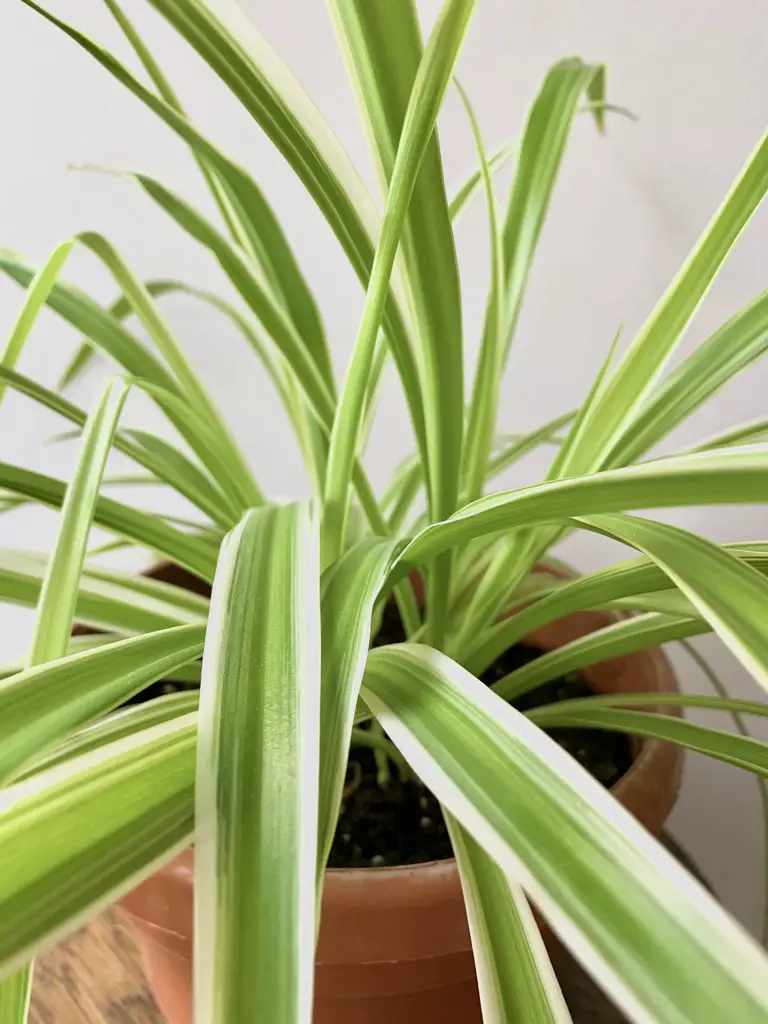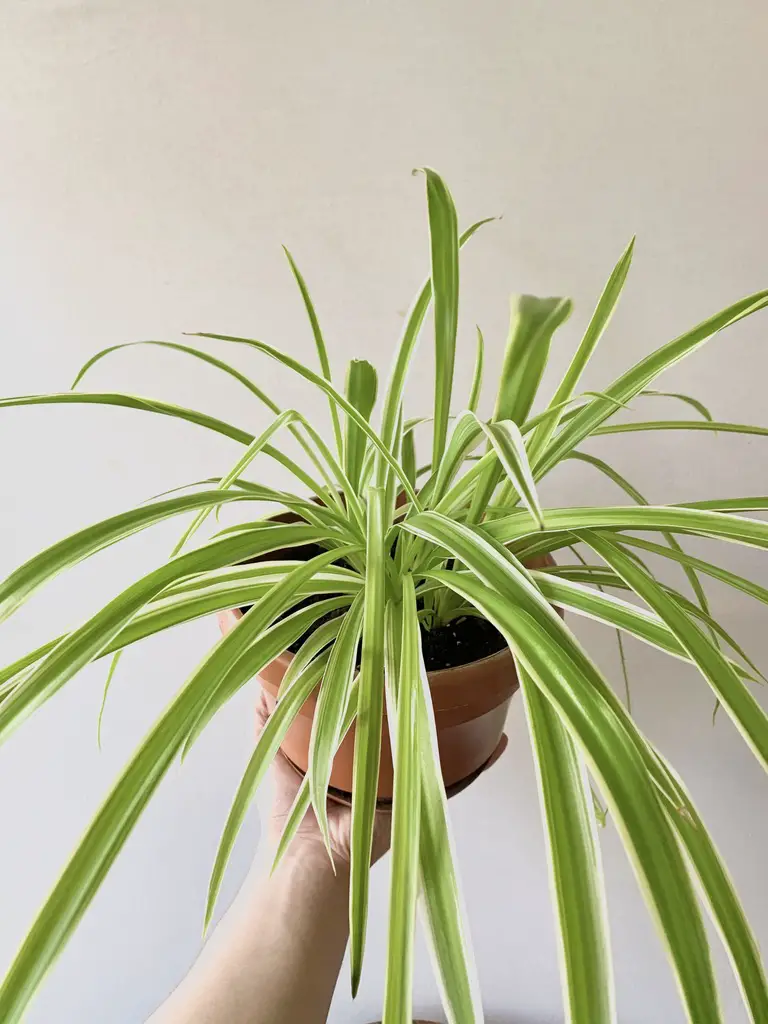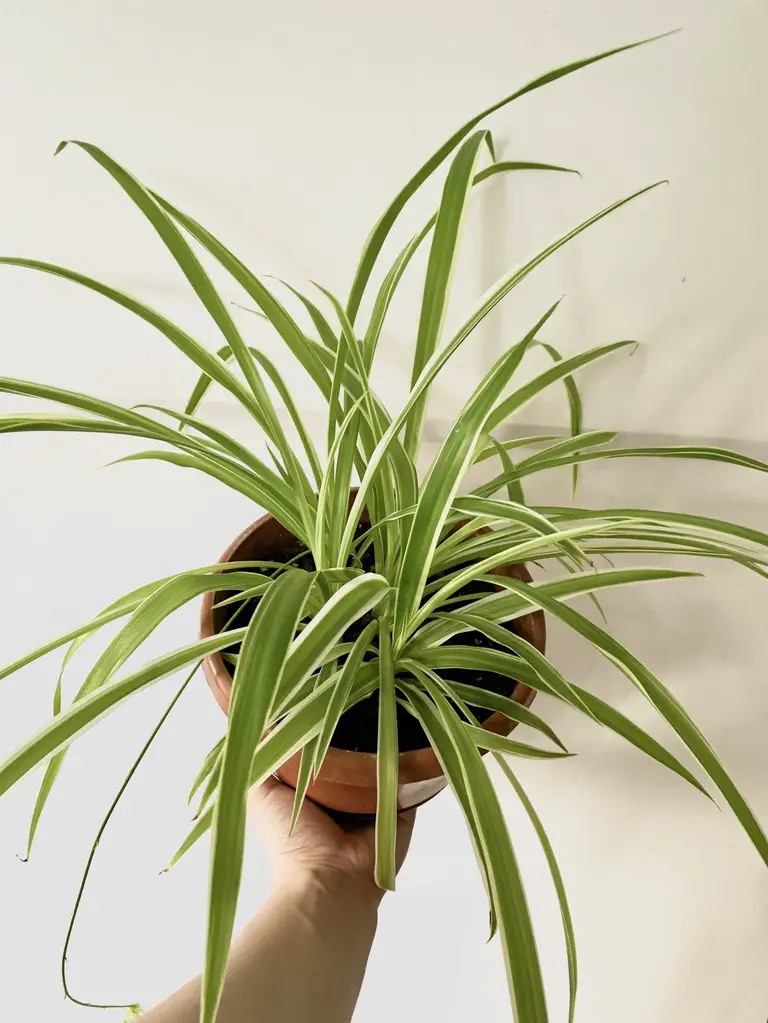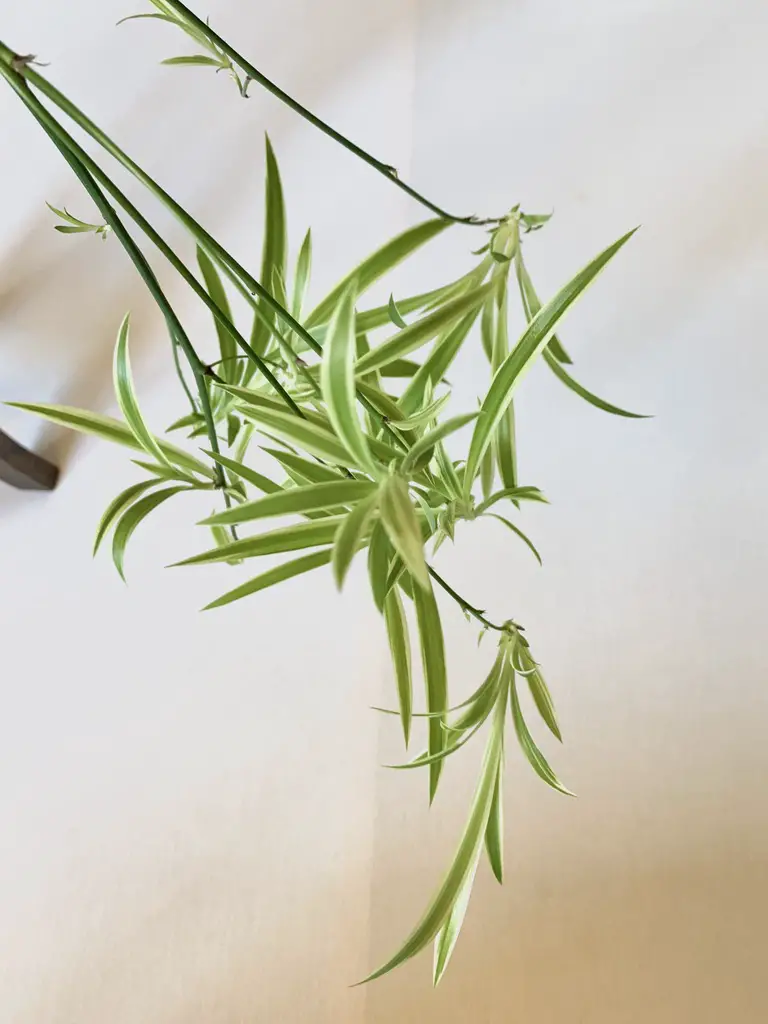
Spider Plant
Botanical Name: Chlorophytum Comosum
Common Name: Spider Plant, Airplane Plant, Ribbon Plant
Family: Asparagaceae
About Spider Plant
Chlorophytum Comosum more commonly known as the Spider Plant is a medium-sized, fast-growing plant that is popular among beginners due to its ease of care. The plant is native to vast areas of the African continent where it can be found in over 20 countries. The plants are characterized by long thin leaves that come from a central stem. There are many variations of Spider Plants, some are completely green while others have variegated or curly leaves. On average these plants grow to about two feet tall and can spread about three to four feet in width once mature.
Spider plants got their nickname from the offshoots or baby spider plants that form at the end of long stems. These offshoots are often called spiderettes, they vaguely resemble spiders and thus led to their common name. Spider Plants are one of the easiest plants in terms of care and the ease of propagation is an added bonus. If you have one mature Spider Plant you may soon have ten or more spiderettes within a few weeks to months. I will go into more detail about how to detach and plant these offshoots further down the page.

Light
The ideal lighting for your Spider Plants is bright to medium indirect light. It’s best to keep Spider Plants out of direct sunlight to avoid sunburned foliage. As these plants are very adaptable they can also survive in lower light conditions but the growth and production of offshoots will substantially slow down.
If you are looking to get a Spider Plant for a low light area I recommend getting a completely green variety as the variegated Plants require more light to maintain their variegation. In the picture below is a variegated Spider Plant that is thriving in a north-facing window where it receives bright indirect light.
Water
The best practice is to allow the soil of your Spider Plant to dry almost completely before the next watering. Spider Plants communicate their need for water by becoming more muted and bleached out when there is a lack of water. If you notice your spider plants green color has become faded and muted it is definitely time for watering.
It is also important to know that Spider Plants that are producing or already have many offshoot Spiderettes require considerably more water than a Plant that is not in the process of flowering or producing offshoots.

Humidity & Temperature
Chlorophytum Comosum is extremely adaptable to varying humidity levels. The only thing to beware of is that when humidity levels are consistently low (think 40% and below) leaf tips of your plant may begin to become crispy and brown. To minimize the negative effects of low humidity you can proactively mist your Spider Plant daily or set a pebble train with water beneath its pot.
The ideal temperature range for these plants is between 55 and 80 degrees Fahrenheit, meaning most indoor spaces will provide a perfect climate for healthy growth. These hardy plants are known to withstand temps as low as 40 degrees Fahrenheit but will experience reduced growth, at around freezing (32 degrees) Spider Plants will begin to die off beyond saving, so if you plan to keep your plant outdoors keep your eye on the forecasts.
Toxicity
The ASPCA lists Spider Plant as non-toxic to both cats and dogs making this an ideal plant for those with furry friends. I have a small dog who occasionally gets curios and chews on some of the more enticing looking foliage, without any negative consequences.
The plant is also not known to be toxic to humans

Tips
As this is a fairly easy-care plant species the only real danger to their health is root rot or incorrect lighting conditions. It is best to let your Spider Plant(s) dry out between waterings, you will notice a bleached appearance and a fading green when they are in need of watering. I really enjoy that these plants have such a noticeable cue to let you know when it’s time for a watering!
In terms of providing incorrect lighting conditions, just be careful not to place these plants in direct sunlight as their foliage may become sunburned. The best place for them is in bright indirect light. This will also ensure that your plant grows healthy and produces many spiderettes.
Once your plant produces offspring it is also a good idea to leave them attached to the mother plant until they have reached a somewhat substantial size. This way when you decide to transplant them into their own pots they have a better chance of survival.
Frequently asked questions
Can I leave the offshoots on the mother plant?
Yes, you certainly can, some people enjoy how mature plants look when they have many stems of spiderettes hanging below it sure provides for extra layers to the plants look. Leaving the spiderettes on the mother plant will require more frequent waterings. If you have a very mature plant with many spiderettes it is also a good idea to provide fertilizer every two months during the growing season.
How should I propagate Spider Plants?
Once your mother plant has produced a stem, bloomed, spiderettes will appear. At first, they will be tiny and without any roots. After a few weeks to months, you may notice that the offshoots begin to produce small roots of their own, this is the best time to remove them from the mother plant to transplant.
Once they are ready make sure to plant the spiderettes in light and airy soil. Provide a fast draining medium and be sure the pot they are placed in has proper drainage holes. During the first few weeks, they will need more frequent waterings, once they have developed a proper root system they can be watered less frequently.
Can I grow a Spider Plant in water?
Although it is not the perfect plant for hydroponics it is possible. Make sure you provide water-soluble fertilizer for your spider plant if you plan to grow it in water. Spider plants are so adaptable that even without fertilizer they will survive in water alone, but you may notice very slow to stagnant growth.